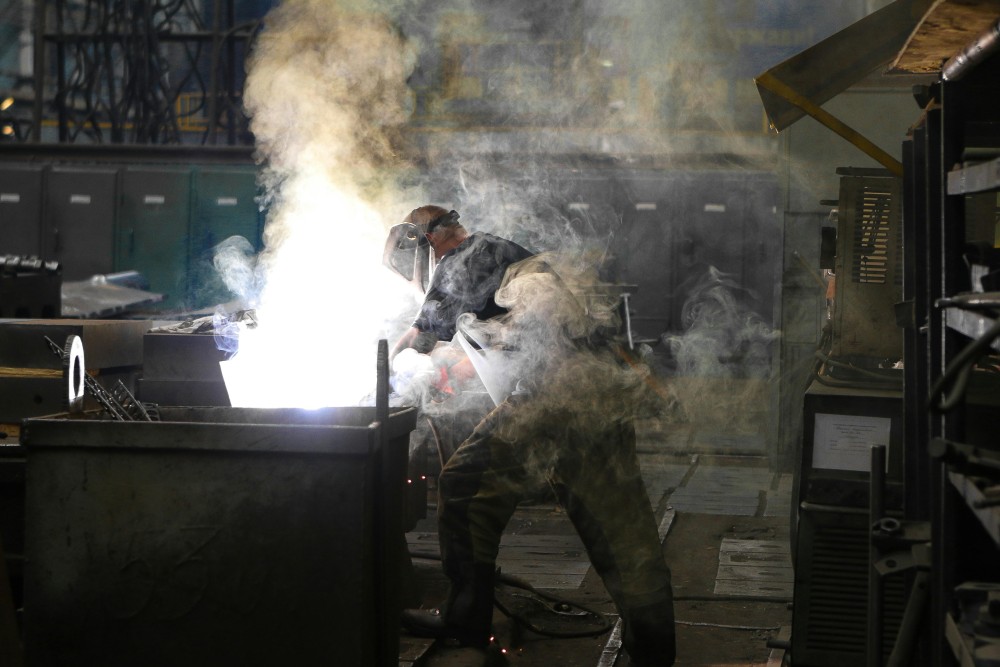
How To Measure Indoor Air Quality
Indoor air quality refers to the air pollution inside homes, offices or buildings. It is a mixture of pollutants that are generated from building materials, furniture or other activities across a variety of industries such as soldering, 3D printing or chemical manufacturing.
What can affect indoor air quality?
Many substances can affect the quality of air indoors, as well as the design of a building. If a building is designed to keep heat sealed in, this can reduce ventilation and increase pollution levels – affecting the indoor air quality. Other substances that can affect indoor air quality include:
- Radon
- Allergens
- Dust
- Mould
- Bacteria
- Asbestos
- Carbon monoxide
- Lead
- Pesticides
- Harmful fumes from compounds
Air quality in the workplace
The Health & Safety at Work etc Act 1974 is the primary legislation used in Great Britain that covers occupational health and safety, this includes the following duties that:
- employees have to themselves and to each other
- employers have towards employees and members of the public
- certain self-employed have towards themselves and others
The Approved Code of Practice under the Health & Safety at Work etc Act 1974 and the Occupiers Liability Act 1984, states that “indoor air quality should be at least equal to, but ideally better than, the air outside your building.”
Under regulation 6 of The Workplace (Health, Safety and Welfare) Regulations 1992, “Effective and suitable provision shall be made to ensure that every enclosed workplace is ventilated by a sufficient quantity of fresh or purified air”.
How to measure indoor air quality
Indoor air quality can be measured using specialist air quality monitors, that act as sensors to provide a measurement of the quality of air indoors. These measurements include:
VOC (Volatile Organic Compounds) – these are chemical pollutants that are defined by the EPA as potential sources of indoor air quality issues.
Levels of particulate matter (PM10/PM2.5) – this refers to everything in the air that is not a gas, such as allergens, that consists of a wide variety of chemical compounds and materials – some of which can be toxic. Particulates are classified according to size, where particles are less than 10 micrometres in diameter (PM10) and less than 2.5 micrometres in diameter (PM2.5).
AQI (Air Quality Index) testing – this is a measurement of air quality the EPA uses to determine the risk of health problems that are associated with indoor pollution as well as outdoor. AQI testing should be conducted by qualified professionals who have the correct equipment and expertise to detect extensive harmful substances in the air.
Humidity – this will help to indicate the potential for mould growth.
Temperature – this determines the overall temperature of the air indoors.
How to improve indoor air quality?
Depending on the results found, the best way to improve indoor air quality includes sufficient ventilation indoors. This can be achieved by opening more windows, or installing the correct fume extractor or HEPA air filter.
At Purex, our range of products including the iFume Series, Digital – 9000 Series and our Analogue Series all comply with the HEPA filter standard of removing 99.97% of particles down to 0.3 microns across a variety of industries. All of our units are quick to install, quiet in operation and come equipped with both main and pre-filters. To find out more, contact our specialist teamtoday.
Latest insights
-

How Fume Extraction Improves Workplace Health and Safety
If you’ve ever worked in an industrial environment, you know that the highest priority is health and safety. ... Read more -

Purex International Creates 7 New Jobs in Brough – Including Apprenticeships for Local Talent
Brough, East Yorkshire – Purex International is proud to announce 5 brand new full-time job openings and 2 apprenticeship roles at our manufactu... Read more -

A Day in the Life at Purex: How Every Team Drives Our Customer-First Approach
At Purex, everything we do is shaped around the customer, from the way we start each morning to how we wrap up the day. Our 40-year mission to deliver... Read more
How Purex can help
We provide an excellent level of service and support, including our 24-hour technical support service and start-to-end projects. Get in touch with our expert team today to find out more.